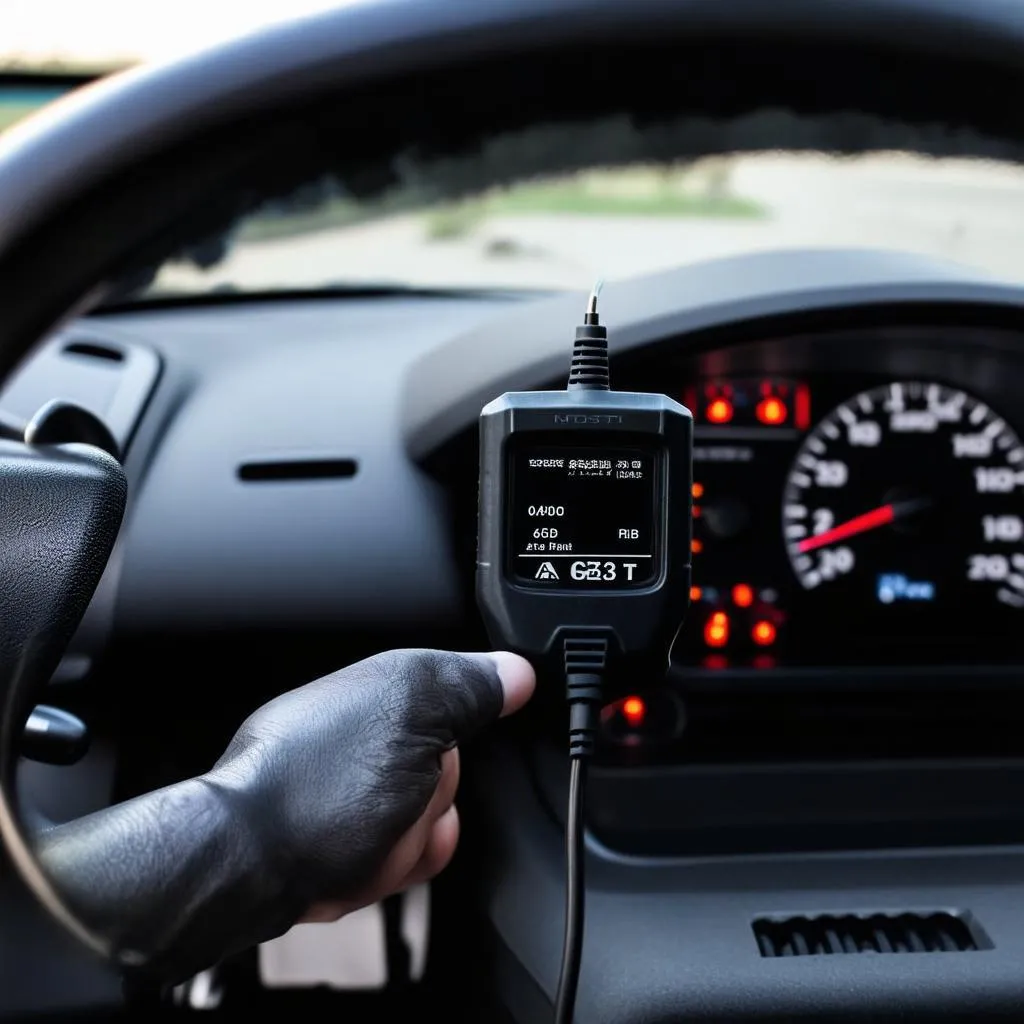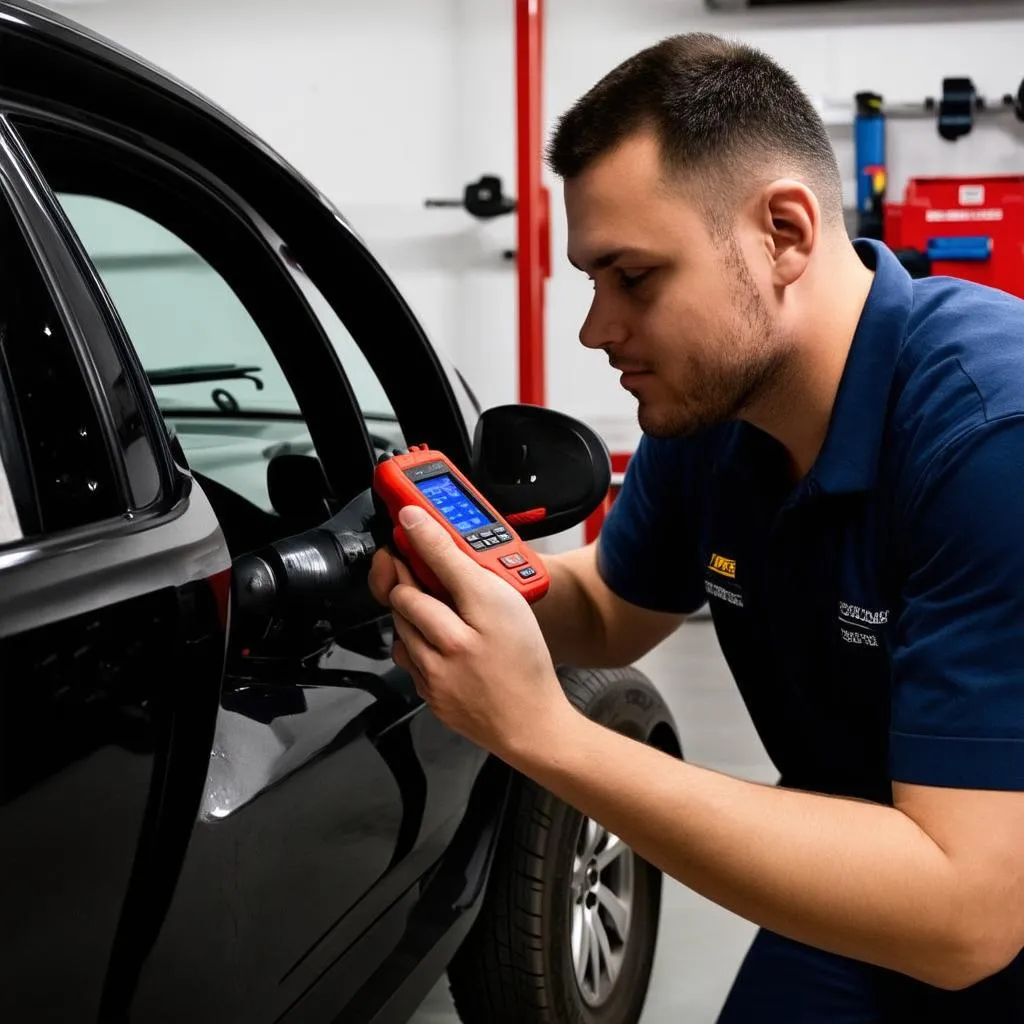Ever feel like you’re staring into your car’s dashboard, seeing a foreign language? We’ve all been there. You’re trying to decipher those cryptic OBD-II codes, feeling a bit like an ancient rune translator. One minute you’re searching for “what does P0420 mean,” the next you’re down the rabbit hole of “enabling criteria” and “diagnostic trouble codes.” And then it hits you: what’s the magic phrase when all the OBD-II standards get the green light?
Let’s pop the hood on this mystery and shed some light on the terminology of the OBD-II system.
Deciphering the Jargon Jungle
Before we unlock the secret phrase, it’s important to understand the “why” behind all these standards. Imagine your car’s engine as a well-oiled machine (hopefully!). For it to run smoothly, all parts need to work in harmony. OBD-II is like the conductor, ensuring each component is playing its part correctly. Now, each “enabling standard” is a specific test or condition the OBD-II system uses to check if everything’s in tune.
For example, one standard might monitor your oxygen sensors, while another keeps tabs on the catalytic converter. These standards are carefully crafted by automotive engineers to ensure your car is running cleanly, efficiently, and safely.
The Holy Grail: “Ready” or “Complete”
So, what’s the magic word when all these enabling standards get a thumbs-up? It’s usually “Ready” or “Complete.”
Think of it like this: your car’s computer is diligently running through its checklist, ticking off each enabling standard as it confirms everything is A-OK. Once all tests are successfully completed, the system flags those standards as “Ready” or “Complete.”
Why does this matter?
Well, if even one standard isn’t marked as “Ready,” it can throw a wrench in your plans, especially if you’re due for an emissions test! It’s like showing up for an exam with an incomplete answer sheet – you won’t get a passing grade.
Navigating the OBD-II Maze
Let’s face it, dealing with OBD-II codes can feel like navigating a labyrinth. Here are some common situations where understanding the “Ready” or “Complete” status is crucial:
- Emissions Testing: Most states require your OBD-II system to be “Ready” before you can pass an emissions test.
- Diagnosing Issues: If you’re experiencing car troubles, a “Not Ready” status for a particular standard can point mechanics in the right direction.
- Buying a Used Car: Checking the OBD-II readiness status is a smart move when purchasing a used car, as it can reveal potential hidden issues.
Tips for a “Ready” and Stress-Free Drive
- Regular Maintenance: Just like a well-tuned orchestra, regular maintenance keeps your car’s systems running smoothly and helps those enabling standards stay “Ready.”
- Drive Cycles: Did you know your car needs to complete specific driving patterns for certain standards to be marked “Ready?” These “drive cycles” vary, but they usually involve a mix of city and highway driving.
- Consult the Professionals: If you’re ever unsure about your OBD-II system or encounter persistent issues, don’t hesitate to reach out to a qualified mechanic. They have the knowledge and tools to diagnose and fix any problems.
 car dashboard with obd scanner plugged in
car dashboard with obd scanner plugged in
FAQ: Unlocking More OBD-II Secrets
- Q: How many enabling standards are there?
- A: The exact number varies depending on the make, model, and year of your car. However, there are generally around 8-10 common standards.
- Q: How long does it take for the system to become “Ready?”
- A: It can take anywhere from a few short drives to several days of regular driving for all standards to be marked “Ready.”
- Q: Can I reset my OBD-II system myself?
- A: Yes, you can disconnect your car battery for a short period to reset the system. However, be aware that this will also erase any stored diagnostic trouble codes, which can be helpful for mechanics.
 mechanic connecting a diagnostic tool
mechanic connecting a diagnostic tool
Other Burning Questions? We’ve Got Your Back!
- Curious about a specific OBD-II code? Check out our comprehensive OBD-II code library for detailed explanations and troubleshooting tips.
- Want to learn more about your car’s electrical system? Dive into our articles on car electronics and diagnostics.
- Need expert advice? Contact our team of automotive gurus via WhatsApp at +84767531508. We’re here to help you navigate the world of car repair and maintenance with ease.
Remember, knowledge is power when it comes to your car. Stay informed, stay safe, and enjoy the open road!